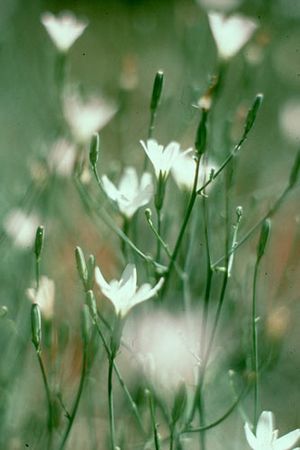Malheur wirelettuce facts for kids
Quick facts for kids Malheur wirelettuce |
|
|---|---|
 |
|
| Conservation status | |
| Scientific classification | |
| Kingdom: | |
| (unranked): | |
| (unranked): | |
| (unranked): | |
| Order: | |
| Family: | |
| Tribe: |
Cichorieae
|
| Subtribe: |
Microseridinae
|
| Genus: |
Stephanomeria
|
| Species: |
S. malheurensis
|
| Binomial name | |
| Stephanomeria malheurensis Gottlieb
|
|
The Malheur wirelettuce (scientific name: Stephanomeria malheurensis) is a special type of flowering plant. It belongs to the Asteraceae family, which includes plants like daisies and sunflowers. This plant is very rare and only grows in one specific area: Oregon in the United States. Because it's so rare, the U.S. government has listed it as an endangered species. This means it's protected by law to help it survive.
Contents
About the Malheur Wirelettuce
Its Discovery and History
The Malheur wirelettuce was first found in 1966. The only place it has ever been known to grow is in Harney County, Oregon. For a few years in the 1980s, people thought it had completely disappeared.
However, some individual plants were seen again over time. To help save the species, scientists grew new plants from seeds at the Berry Botanic Garden in Portland. These new plants were then carefully planted back at the original site. As of 2001, some of these plants were still growing there.
Where it Lives
This unique plant grows on top of hills. These hills are surrounded by flat land. The soil where it grows is special. It comes from a type of rock called tuff, which is made from volcanic ash. On top of this tuff, there is a thin layer of limestone.
Other plants that grow near the Malheur wirelettuce include:
- Wyoming big sagebrush
- Yellow rabbitbrush
- Basin wildrye
- Cheatgrass
How it Grows
The Malheur wirelettuce is an annual plant. This means it completes its entire life cycle in just one year. It grows from a seed, flowers, produces new seeds, and then dies, all within a single growing season.
A similar plant, called the small wirelettuce (Stephanomeria exigua), also grows in the same area. Scientists believe that the Malheur wirelettuce actually evolved from this small wirelettuce.
Threats to its Survival
Because the Malheur wirelettuce is an annual plant, it is very sensitive to other plants that invade its habitat. One of the biggest threats to its survival is an invasive plant called cheatgrass. Cheatgrass can grow very quickly and take over the space and resources that the Malheur wirelettuce needs to survive.
Scientists think the Malheur wirelettuce evolved in a special way. It's considered a great example of "quantum speciation." This is a fast way for new species to form, often from a small group of individuals that become separated from their main population.


